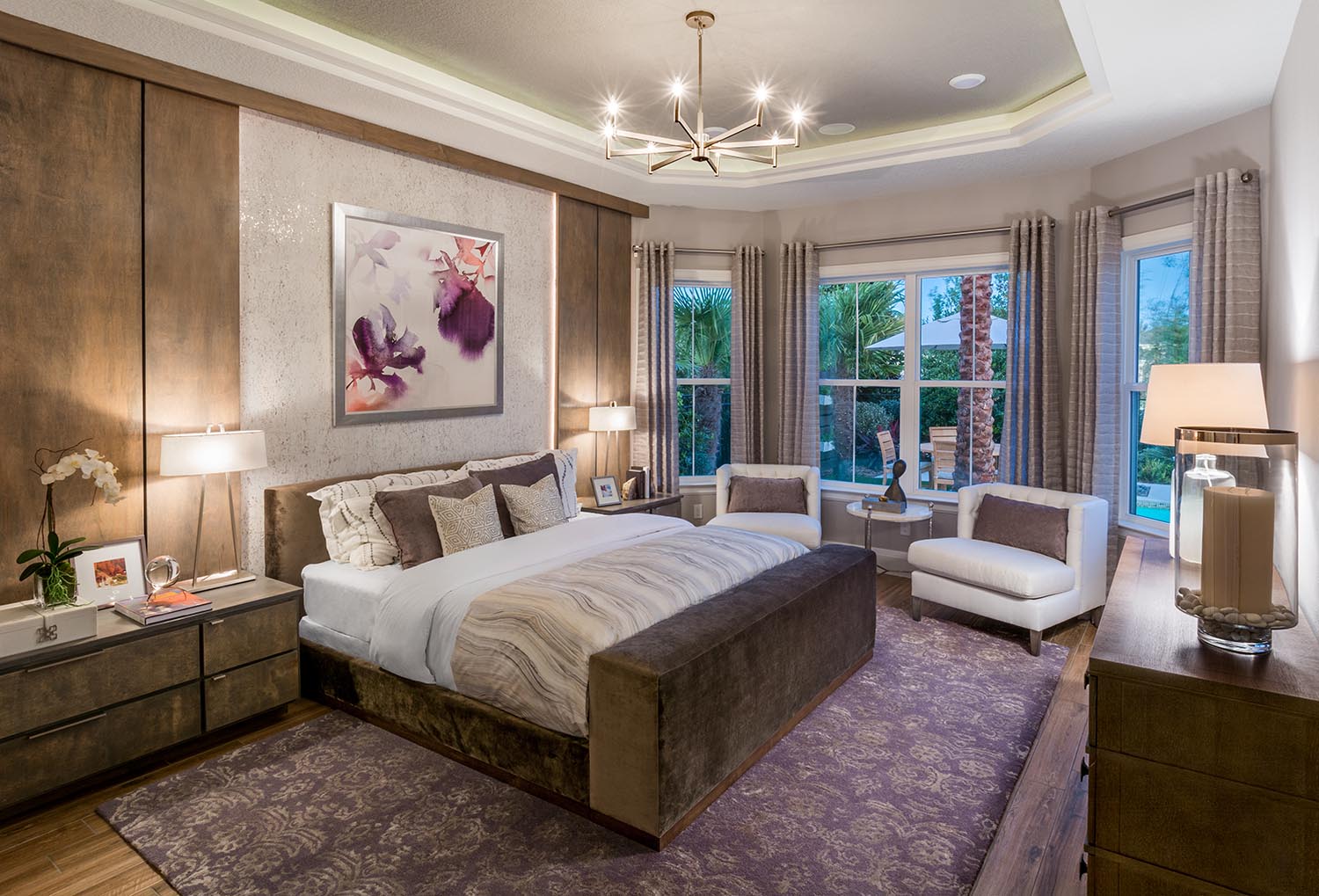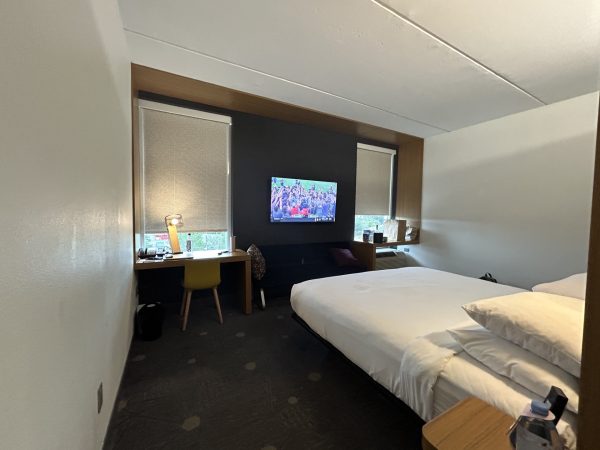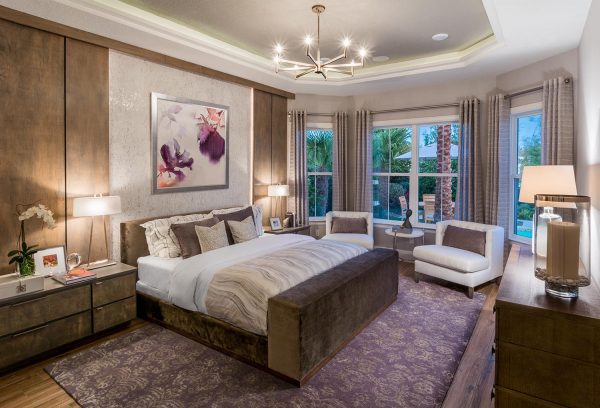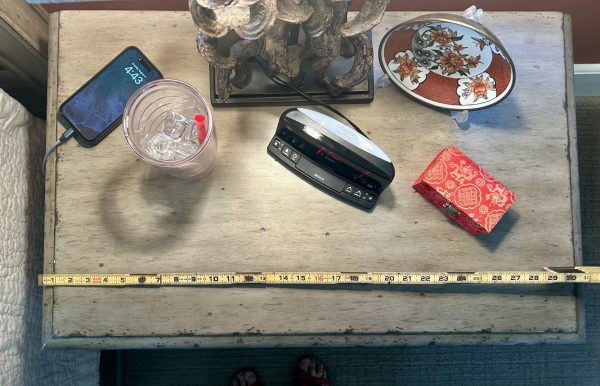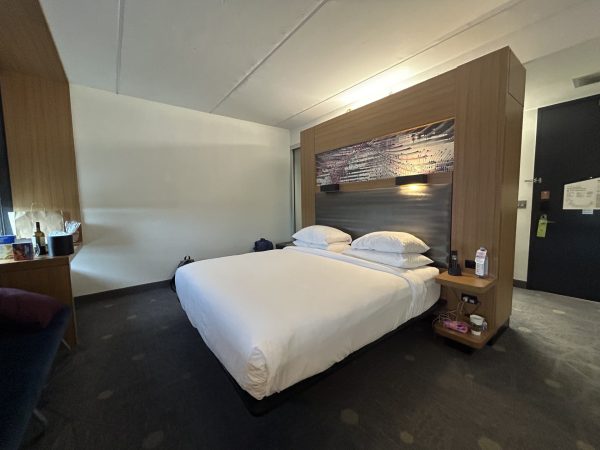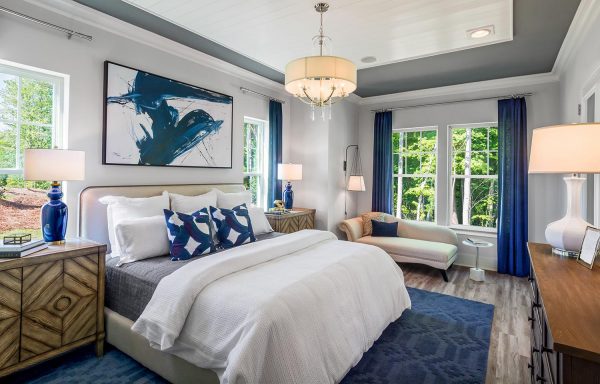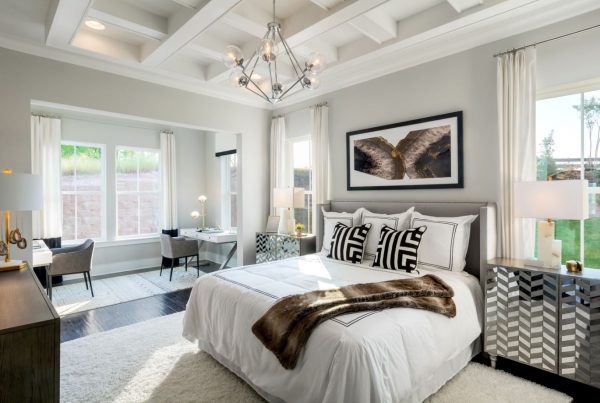I stayed in a hotel recently and the room felt odd to me. Then I realized it was the placement of the bed – it was on the wrong wall. The headboard of the bed was behind you as you entered the room. The focal wall which should have been home to the bed had a large screen TV.
I was always taught the bed and its headboard should be the focus of a sleeping room. It is after all the most dominant piece of furniture based upon its size. It also fulfills two rather important roles in our lives – sleep being one of them.
Proper Placement
As a focal point, the bed should either be on the wall directly across from the door or at 90 degrees off to the side. You should never enter to the side of the bed. Thus, the bed and headboard are visually dominant. Furthermore, the bed looks best when centered on the bed wall.
How Big is the Bed?
Let’s start with a king-size bed. The mattress is 76” wide (6’-4) and 80” long (6’-8”). But a mattress is only part of the story. You need also to consider bedding, headboards, and footboards in some cases. A typical headboard is about 3” thick and 7’ long. Bedding adds another 2 inches, so I like to use 6’-6” for the width and 7’ for the overall length. If a footboard is included, it adds another 3” to 4”.
- A queen-sized mattress: 60” (5’-0”) wide by 80″ (6’-8”) long – the same length as a king-sized bed.
- Double or full-size mattress: 54” wide (4’-6”) by 75” long (6’-3”).
- A single or twin mattress: 39” wide (3’-3”) by 75” long.
Full size and queen size beds typically use the same length of headboard which can be as short as 5’-3”.
How Big is the Bed Wall?
Now that we have bed dimensions, we can determine the size of the bed wall. This is determined by the size of the bed, the headboard, and the flanking nightstands. For the primary bedroom bed wall, I like to use 7’ for the headboard and 30” to 36” for each nightstand. Add another 4” for the spaces between the furniture and you get a minimum of 12’-4” for 30” nightstands or 13’ for 36” nightstands. A 30” nightstand is needed for a lamp, alarm clock, water glass, and cellphone.
Following that logic, a queen-sized bed wall should be a minimum of 10’-4”.
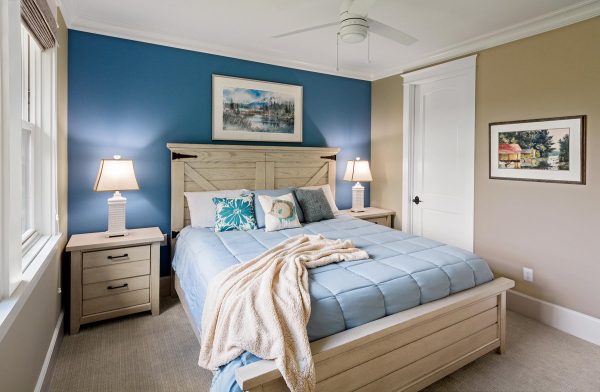
My recent hotel room had mice-sized nightstands, which made placing my water and cellphone bedside a challenge without fear of knocking over my water.
How Wide should the room be?
I prefer to use a minimum width for the primary bedroom of 12’. This will allow 7’ for the bed and headboard or 7’-3” for the bed, footboard and headboard, a 19” deep dresser and 36” to 38” to pass between.
Windows
Typically, bedrooms are rectangular with the bed on the long wall and windows at the end of the room on the short wall. If the room is big enough, windows can be added to the side wall flanking the bed. If the room is primary suite and sized for a king size bed, the flanking windows should be at least 7’ to 7’-6” apart to allow a king-sized headboard to live between the windows.
Furnished Floorplans
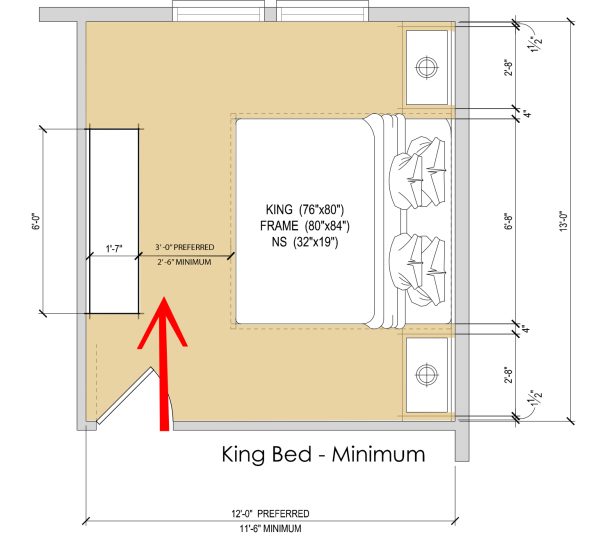
It is our practice to always show furniture in all rooms. It allows everyone to visualize how the room will look and function once the future residents move in. It is also helpful in locating light switches and outlets. Curiously, many builders market their floorplans without furniture, making the rooms look deceptively larger. Others go to the opposite extreme and show their furniture in color and include lamps and rugs, making the floor plan look busy and cluttered. My preference is having interactive floor plans that have the ability to toggle simple furniture outlines for buyers to better perceive the size of the room.
The bedroom should be our sanctuary where our daily stresses melt away and we can hit the reset button to feel rejuvenated to take on the next day. A poorly thought-out bedroom that forces you to navigate around furniture without stubbing your toe in the middle of the night is not going to accomplish that. Let’s make every bedroom a dream retreat to look forward to.
Categorized in: Uncategorized
This post was written by Housing Design Matters


